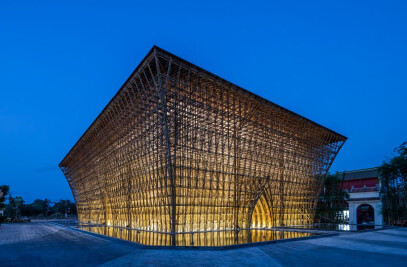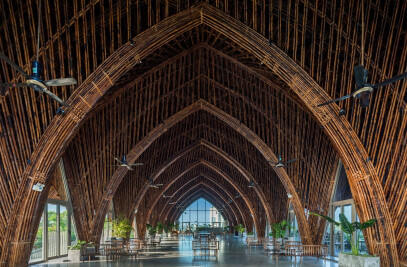The serial project, called "S HOUSE", has begun to propose a prototype house for low-income classes in the Mekong Delta area. After building two successful case-study houses, a steel structure model in 2012 and a precast concrete structure model in April 2014, a new prototype, S HOUSE 3, was constructed in Ho Chi Minh City.
The aim of this serial project is to provide stable but lightweight, permanent but affordable homes for low-income earners in a harsh tropical climate. Although there are many local challenges such as weak ground condition, frequent typhoon and potential earthquake, the structure is stable enough to withstand natural disasters. Passive design methods are applied throughout the series, including but not limited to; natural lighting and ventilation.
Combining the advantages of the first and second prototype, S House 3 realizes a higher of durability, flexibility, and easier construction while maintaining the affordability and lightweight of the series. The main structure is made from lightweight steel. Slender steel lattice walls secure, support, and rigidify the whole frames. Thus the number of beams is minimized, reducing steel quantity greatly compared to previous prototypes - this structure only weights 1,200kg. Pedestal, incorporated with foundation, is made of reinforced concrete. Thanks to this, the galvanized steel structure is isolated from the ground, ensuring its durability even in a climate of high temperature and high humidity.
As was in the previous prototypes, the basic strategy of construction is a combination of modular structural components and DIY finishes. Prefabrication helps to control quality, cost management, and future mass production. Galvanized steel frame and precast concrete foundation guarantee predetermined stability and accuracy. The lightweight structure allows smaller foundation and transportability by small boats, since waterways are still the dominant mean of transport in certain areas in Vietnam. By pouring additional concrete, this compact foundation can be extended on site if necessary. Light frames with simple bolted connection also encourage dwellers and neighbors to participate in construction. All components are designed to be lighter than 60kg, to allow easier transportation and construction - It takes only three hours to assemble the whole structure and roof.
Finishing materials can all be assembled and replaced easily by dwellers and neighbors. For the prototype, lightweight cement board is chosen for cladding.
Starting from the Mekong Delta, the S HOUSE project is aiming to expand itself to the entire Vietnam, South East Asia, and to the rest of world - India and African countries - , where low-income people are suffering from poorly built environment. Lightweight components of the S HOUSE are designed to be transportable by means of shipping containers.
The latest prototype in progress, S HOUSE 4, will span a much larger space. Therefore, it is more flexible in use compared to the previous prototypes; Not being limited to housing, it can accommodate various functions such as retail, school and clinic, which are increasingly demanded in developing countries.

































